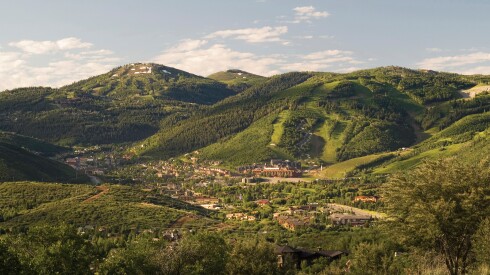Since the Neolithic and Bronze Ages, Europe has been home to many of the civilizations whose innovations have shaped our world. Its landscapes have inspired some of the most celebrated artworks of modern times, and its cities and towns have been the sites of historic triumphs—such as the development of the printing press—as well as major tragedies, like the battles of World War I and II.
The countries that form today’s European Union contain 350 sites designated on UNESCO’s World Heritage List. Many of them are hugely popular tourist destinations, including the canals of Venice and Barcelona’s Gaudí-designed buildings.
But on September 15, UNESCO launched World Heritage Journeys Europe, an interactive website that seeks to spotlight the lesser-known UNESCO sites in Europe—and also make it easier for travelers to visit them in real life.
The new website features 34 heritage sites across 19 European countries divided into four categories: Ancient Europe, Romantic Europe, Royal Europe, and Underground Europe. As users click through photos and descriptions of the featured World Heritage sites, they’re provided with information about how and when to visit each. The platform also contains suggested itineraries—such as a train trip with Eurail through France, Portugal, and Spain—that outline how travelers can explore a range of the featured UNESCO sites within one journey.
According to UNESCO representatives, the initiative is part of an alliance between the cultural organization and National Geographic, cofunded by the EU. It’s intended to promote sustainable tourism by encouraging travelers to explore lesser-visited parts of Europe, beyond the continent’s major tourist hubs.
“Our goal is to change how people travel, staying longer in destinations, experiencing the local culture, and gaining a deeper knowledge,” says Mechtild Rössler, director of the World Heritage Center at UNESCO.
Here’s a peek at some of Europe’s lesser-known UNESCO sites you’ll find on the new platform.
Ancient Europe

Remnants of walls and buildings in Tárraco are among the earliest examples of Roman city planning and military engineering on the Iberian Peninsula.
Photo by Veronika Galkina/Shutterstock
Archaeological Ensemble of Tárraco
Tarragona, SpainApproximately 55 miles south of Barcelona, the coastal Catalonian city of Tarragona was once a major Roman metropolis known as Tárraco. Founded in 218 B.C.E., Tárraco became the center of the Imperial cult for all of the Roman Empire’s provinces along the Iberian Peninsula. Today, well-preserved excavations in and around Tarragona showcase some of the earliest examples of Roman city planning and military engineering. Notable sites include the Tarragona Ampitheater and the Les Ferreres Aqueduct, built by the Romans to supply water to the ancient city.
✈ See all of UNESCO’s “Ancient Europe” destinations at VisitWorldHeritage.com. Royal Europe

The Pena Palace sits northwest of Lisbon in Portugal’s Sintra Mountains.
Photo by Boris Stroujko/Shutterstock
Cultural Landscape of SintraSintra, PortugalBeginning in the 15th century, Sintra became the summer getaway of choice for European royals and aristocrats. Located just northwest of Lisbon, Sintra’s historic town center is home to the National Palace of Sintra, a Gothic- and Manueline-style castle that was inhabited for nearly eight centuries by the Portuguese monarchy. The colorful Pena Palace—one of the Seven Wonders of Portugal—sits on the hills overlooking Sintra. ✈ See all of UNESCO’s “Royal Europe” destinations at VisitWorldHeritage.com.
Romantic Europe

Vilnius’s historic center is one of the largest surviving medieval old towns in Northern Europe.
Photo by Andrii Lutsyk/Shutterstock
Vilnius Historic CenterVilnius, LithuaniaThe capital of Lithuania is home to one of the largest and best-preserved Old Towns in Northern Europe. Vilnius’s historic center features a beautiful collection of Gothic, renaissance, and baroque buildings and churches, above which colorful hot air balloons decorate the sky. (It’s one of the few European capitals where use of the floating devices is permitted.) Beyond Old Town, public parks and lakes span the city, and the streets are lined with coffee shops where locals gather to socialize. ✈ See all of UNESCO’s “Romantic Europe” destinations at VisitWorldHeritage.com.
Undergound Europe

In Épernay, underground champagne cellars provided shelter for local people during World War I and II.
Photo by Richard Semik/Shutterstock
Champagne Houses, Hillsides, and CellarsChampagne, FranceJust an hour’s train ride from Paris, France’s Champagne region is famous for its quaint villages and vineyards where the namesake sparkling wine is produced. But this region’s winemaking culture can be found below ground as well. Sweeping networks of 17th-century tunnels and champagne cellars lie beneath the area’s hilly landscapes, where cool temperatures foster the atmosphere that gives champagne its unique qualities. Champagne’s underground cellars—the most well-known of which can be found in Épernay and Reims—were used to provide shelter and protection to locals during both World Wars. (Read more about the surprising history of France’s hidden champagne caverns.) ✈ See all of UNESCO’s “Underground Europe” destinations at VisitWorldHeritage.com.











